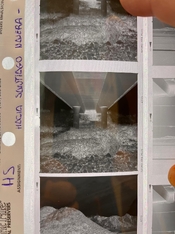It is amazing how complex people on Photrio like to make things

.
The edge printing is simply an exposure on the film - historically through a changeable mask, but I think it now may be done with electronically controlled light sources that "write" the characters and symbols.
And the machines that do this need to be adjusted to the light sensitivity - the "speed" - of the film receiving the exposure.
So, for example, Delta 100 needs two stops more exposure than Delta 400.
The exposure is set fairly simply - just to whatever level will give the same nice black as you will see in a dense but not over-exposed highlight in any well exposed (at ISO speed) and appropriately developed negative, no matter what the film.
And that will be independent of the developer used!
Because if a properly exposed negative is properly developed in ID-11 at whatever that developer needs for the film, then it will be properly developed in DD-X at whatever that developer requires.
The contrast might differ
slightly from developer to developer, and film to film, but edge printing isn't going to require fine tonality!


 .
.
